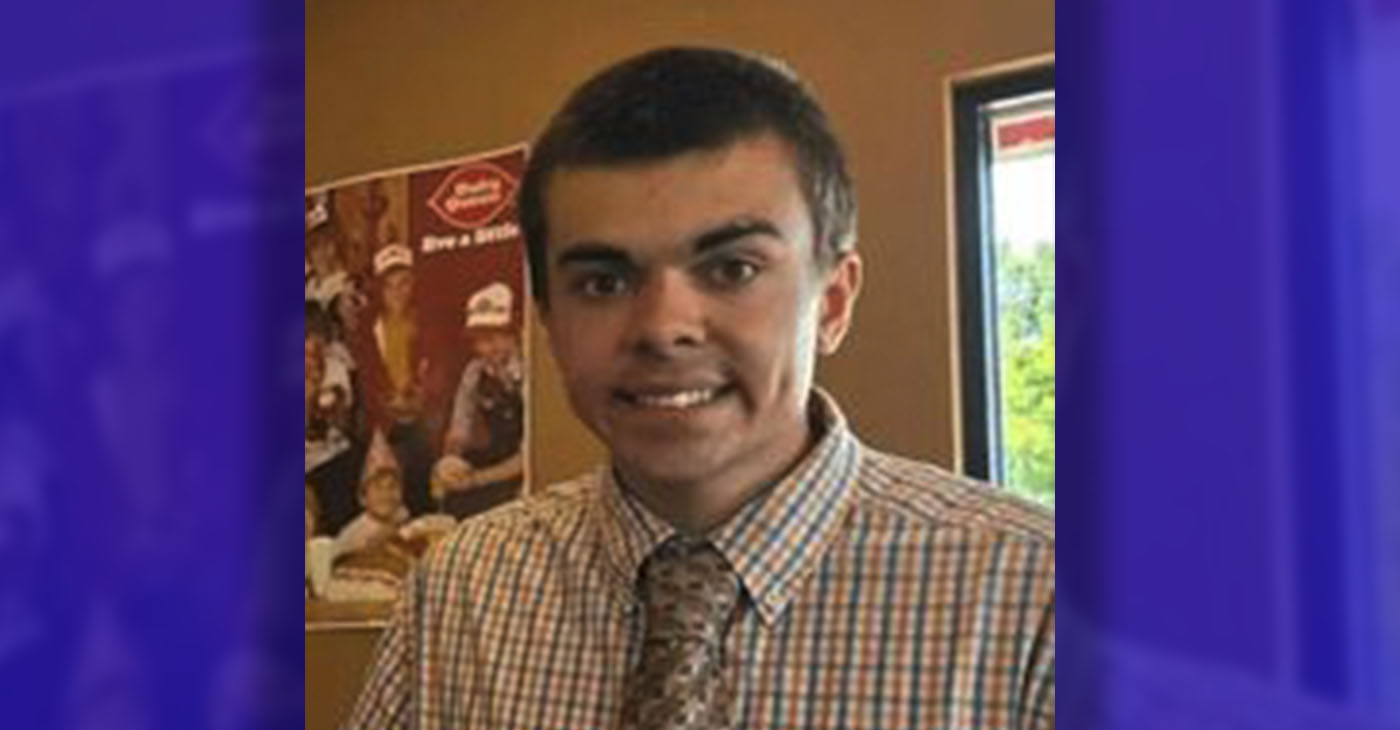#NNPA BlackPress
OP-ED: Rosemary Kennedy: Challenging RFK Jr.’s Views on Autism
NNPA NEWSWIRE — The Kennedys has a history of dealing with autism and intellectual disabilities. More specifically, Rosemary Kennedy, dubbed “The Forgotten Kennedy”, was most likely on the autism spectrum during the ’50s and ’60s. Unfortunately

By Kadin McElwain:
Right now, Robert F. Kennedy Jr is in the process of getting the Senate votes needed to become the Secretary of Health and Human Services in the United States. During this process, the 71-year-old politician was called for various comments made about the link between autism and vaccines. This includes calling autism “non-existent”, “tragic”, and “an epidemic”, all of which Kennedy Jr refused to explain during the hearing. This was further supported by President Donald Trump, who said we “needed Bobby” to combat the 1-in-32 autism diagnoses in children that happen every year in the United States. This is highly hypocritical of Kenedy Jr.
The Kennedys has a history of dealing with autism and intellectual disabilities. More specifically, Rosemary Kennedy, dubbed “The Forgotten Kennedy”, was most likely on the autism spectrum during the ’50s and ’60s. Unfortunately, instead of helping her be able to function in society and make a name for herself like her famous siblings, patriarch Joe Kennedy Sr had Rosie lobotomized, thrown into a group home, and abandoned for decades until she died in 2005. Robert F. Kennedy Jr didn’t have the right to call autism “a tragedy” and “non-existent” when his family failed his autistic aunt to protect their image. Here is the story of Rosemary Kennedy.
Rosemary’s Struggles
Rosemary was born on September 18th, 1918, the third child of Joe Kennedy Sr and Rose Fitzgerald. Due to deprivation of oxygen at birth, she struggled throughout her life with intellectual disabilities. This included mood swings, elopement, and struggles with academics, many of which are common symptoms of being autistic. Despite her struggles, she still lived a fulfilling life, participating in family activities and even working in England during her father’s time as ambassador to the country. But her struggles were still evident.
At 22, Rosemary “seemed to be going backward”. Her family tried to get her help, sending her to multiple places to give her a chance at life. But during the 30s and 40s, getting her help was complicated and the resources that were available at the time were either extremely scarce or didn’t have enough knowledge on disabilities to help Rosemary. Joseph Kennedy Sr knew that his family’s political careers would be ruined if something wasn’t done soon. So, in 1941, he made a decision that would leave a scar on the Kennedy legacy forever.
The Lobotomy
The lobotomy procedure was preached as something that would help individuals with mental health problems during the time of the Kennedy family’s rise to power. Mental health was widely misunderstood at this time, so society thought that lobotomy was the only way to help those with mental health issues. During the period of the procedure before its discontinuation in the 1960s, 40,000 people were lobotomized in the United States alone. Rosemary was one of these individuals. Joseph Kennedy Sr was so desperate to get their daughter the help she needed and save the family’s reputation in the process, that he thought this would be the only way. He didn’t inform anyone, including his wife, of the decision.
Unfortunately, this left Rosemary with the mental capacity of a two-year-old. She couldn’t walk, she couldn’t talk, and she couldn’t look after herself. So Kennedy Sr had her institutionalized in New York, and then eventually Wisconsin, where she would live for the rest of her life. This secret was kept by the rest of the family for 20 years until John F. Kennedy was elected to the presidency in 1961. Then in 1987, historian Doris Kearns Goodwin revealed the lobotomy to the public. Although Rosemary was implemented into family activities again once the Kennedy siblings were made aware of the institution she was at, she died alone in 2005 of natural causes, having lived only a fraction of what could’ve been a promising life had it not been for Kennedy Sr’s poor decision.
The Bigger Picture and Righting the Wrongs
Joseph Kennedy Sr was misguided when it came to helping Rosemary. He had genuine love for his daughter but also had to protect his family’s reputation by any means necessary, given the stigmatizations surrounding individuals with disabilities during this time. So, he thought lobotomy was the only way to help her. But the Kennedy family has been making an effort to help those with disabilities, to right their wrongs. During the Kennedy administration, President Kennedy signed the Developmental Disabilities Assistance Act into law, assuring that those with physical or mental disabilities would get more resources than ever before to help them live fulfilling lives. Eunice Kennedy Shriver, Ethel Kennedy, and Ted Kennedy have also made efforts to raise awareness about disability rights in this country, which has led to resources being created to help these people, including those on the spectrum.
To conclude, Robert Kennedy Jr has no right to shame people with autism and further stigmatize the disorder when his own family is trying to clean up a misguided mess they made with Rosemary. This makes him a huge hypocrite and puts shame on the Kennedy family name. But the potential Health and Human Services Secretary can still do the right thing. If he is sworn in next week by the Senate, RFK Jr can help further research surrounding autism to better the resources that are available to these individuals currently. He can also use his voice to further advocate for disability rights and join his family in righting the wrongs of their past. Even though the Kennedy family has made a mess, Kennedy Jr can clean up his portion and help make a fair and equal world for all.
#NNPA BlackPress
Chavis and Bryant Lead Charge as Target Boycott Grows
BLACKPRESSUSA NEWSWIRE — Surrounded by civil rights leaders, economists, educators, and activists, Bryant declared the Black community’s power to hold corporations accountable for broken promises.

By Stacy M. Brown
BlackPressUSA.com Senior National Correspondent
Calling for continued economic action and community solidarity, Dr. Jamal H. Bryant launched the second phase of the national boycott against retail giant Target this week at New Birth Missionary Baptist Church in Atlanta. Surrounded by civil rights leaders, economists, educators, and activists, Bryant declared the Black community’s power to hold corporations accountable for broken promises. “They said they were going to invest in Black communities. They said it — not us,” Bryant told the packed sanctuary. “Now they want to break those promises quietly. That ends tonight.” The town hall marked the conclusion of Bryant’s 40-day “Target fast,” initiated on March 3 after Target pulled back its Diversity, Equity, and Inclusion (DEI) commitments. Among those was a public pledge to spend $2 billion with Black-owned businesses by 2025—a pledge Bryant said was made voluntarily in the wake of George Floyd’s murder in 2020.“No company would dare do to the Jewish or Asian communities what they’ve done to us,” Bryant said. “They think they can get away with it. But not this time.”
The evening featured voices from national movements, including civil rights icon and National Newspaper Publishers Association (NNPA) President & CEO Dr. Benjamin F. Chavis Jr., who reinforced the need for sustained consciousness and collective media engagement. The NNPA is the trade association of the 250 African American newspapers and media companies known as The Black Press of America. “On the front page of all of our papers this week will be the announcement that the boycott continues all over the United States,” said Chavis. “I would hope that everyone would subscribe to a Black newspaper, a Black-owned newspaper, subscribe to an economic development program — because the consciousness that we need has to be constantly fed.” Chavis warned against the bombardment of negativity and urged the community to stay engaged beyond single events. “You can come to an event and get that consciousness and then lose it tomorrow,” he said. “We’re bombarded with all of the disgust and hopelessness. But I believe that starting tonight, going forward, we should be more conscious about how we help one another.”
He added, “We can attain and gain a lot more ground even during this period if we turn to each other rather than turning on each other.” Other speakers included Tamika Mallory, Dr. David Johns, Dr. Rashad Richey, educator Dr. Karri Bryant, and U.S. Black Chambers President Ron Busby. Each speaker echoed Bryant’s demand that economic protests be paired with reinvestment in Black businesses and communities. “We are the moral consciousness of this country,” Bryant said. “When we move, the whole nation moves.” Sixteen-year-old William Moore Jr., the youngest attendee, captured the crowd with a challenge to reach younger generations through social media and direct engagement. “If we want to grow this movement, we have to push this narrative in a way that connects,” he said.
Dr. Johns stressed reclaiming cultural identity and resisting systems designed to keep communities uninformed and divided. “We don’t need validation from corporations. We need to teach our children who they are and support each other with love,” he said. Busby directed attendees to platforms like ByBlack.us, a digital directory of over 150,000 Black-owned businesses, encouraging them to shift their dollars from corporations like Target to Black enterprises. Bryant closed by urging the audience to register at targetfast.org, which will soon be renamed to reflect the expanding boycott movement. “They played on our sympathies in 2020. But now we know better,” Bryant said. “And now, we move.”
#NNPA BlackPress
The Department of Education is Collecting Delinquent Student Loan Debt
BLACKPRESSUSA NEWSWIRE — the Department of Education will withhold money from tax refunds and Social Security benefits, garnish federal employee wages, and withhold federal pensions from people who have defaulted on their student loan debt.

By April Ryan
Trump Targets Wages for Forgiven Student Debt
The Department of Education, which the Trump administration is working to abolish, will now serve as the collection agency for delinquent student loan debt for 5.3 million people who the administration says are delinquent and owe at least a year’s worth of student loan payments. “It is a liability to taxpayers,” says White House Press Secretary Karoline Leavitt at Tuesday’s White House Press briefing. She also emphasized the student loan federal government portfolio is “worth nearly $1.6 trillion.” The Trump administration says borrowers must repay their loans, and those in “default will face involuntary collections.” Next month, the Department of Education will withhold money from tax refunds and Social Security benefits, garnish federal employee wages, and withhold federal pensions from people who have defaulted on their student loan debt. Leavitt says “we can not “kick the can down the road” any longer.”
Much of this delinquent debt is said to have resulted from the grace period the Biden administration gave for student loan repayment. The grace period initially was set for 12 months but extended into three years, ending September 30, 2024. The Trump administration will begin collecting the delinquent payments starting May 5. Dr. Walter M. Kimbrough, president of Talladega College, told Black Press USA, “We can have that conversation about people paying their loans as long as we talk about the broader income inequality. Put everything on the table, put it on the table, and we can have a conversation.” Kimbrough asserts, “The big picture is that Black people have a fraction of wealth of white so you’re… already starting with a gap and then when you look at higher education, for example, no one talks about Black G.I.’s that didn’t get the G.I. Bill. A lot of people go to school and build wealth for their family…Black people have a fraction of wealth, so you already start with a wide gap.”
According to the Education Data Initiative, https://educationdata.org/average-time-to-repay-student-loans It takes the average borrower 20 years to pay their student loan debt. It also highlights how some professional graduates take over 45 years to repay student loans. A high-profile example of the timeline of student loan repayment is the former president and former First Lady Barack and Michelle Obama, who paid off their student loans by 2005 while in their 40s. On a related note, then-president Joe Biden spent much time haggling with progressives and Democratic leaders like Senators Elizabeth Warren and Chuck Schumer on Capitol Hill about whether and how student loan forgiveness would even happen.
#NNPA BlackPress
VIDEO: The Rev. Dr. Benjamin F. Chavis, Jr. at United Nations Permanent Forum on People of African Descent
https://youtu.be/Uy_BMKVtRVQ Excellencies: With all protocol noted and respected, I am speaking today on behalf of the Black Press of America and on behalf of the Press of People of African Descent throughout the world. I thank the Proctor Conference that helped to ensure our presence here at the Fourth Session of the […]

Excellencies:
-

 Activism3 weeks ago
Activism3 weeks agoOakland Post Endorses Barbara Lee
-

 Activism4 weeks ago
Activism4 weeks agoOakland Post: Week of March 28 – April 1, 2025
-

 Activism3 weeks ago
Activism3 weeks agoOakland Post: Week of April 2 – 8, 2025
-

 #NNPA BlackPress3 weeks ago
#NNPA BlackPress3 weeks agoTrump Profits, Black America Pays the Price
-

 Activism2 weeks ago
Activism2 weeks agoOakland Post: Week of April 9 – 15, 2025
-

 #NNPA BlackPress3 weeks ago
#NNPA BlackPress3 weeks agoHarriet Tubman Scrubbed; DEI Dismantled
-

 #NNPA BlackPress3 weeks ago
#NNPA BlackPress3 weeks agoLawmakers Greenlight Reparations Study for Descendants of Enslaved Marylanders
-

 #NNPA BlackPress3 weeks ago
#NNPA BlackPress3 weeks agoTrump Targets a Slavery Removal from the National Museum of African-American History and Culture






















































